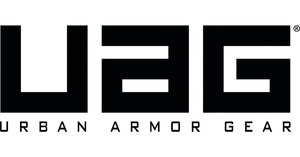Imagine pasting a long, unformatted block of text into a document. The words run together in one continuous stream—no sections, headings, pages, or paragraphs. To find the information you need, you'd have to scroll endlessly.
This is essentially what a website without pagination feels like.
On large websites with dozens or even hundreds of pages—homepages, product listings, blogs, and more—effective navigation becomes crucial. To help users avoid getting lost in a sea of content, everything must be organized systematically, with clear divisions.
This is where pagination comes into play.
What is Pagination?
Pagination is the process of dividing content across multiple pages, typically used in online stores, blogs, and news websites. It’s a user-friendly method to organize content into digestible chunks, ensuring faster load times, simplified navigation, and a cleaner, more familiar layout for visitors.
Pagination serves several key purposes:
- Improves page load speed: Breaking content into pages reduces the amount of data loaded at once.
- Enhances user experience: Visitors can easily find what they need without overwhelming scrolling.
- Streamlines navigation: Pagination creates clear pathways for users to move through your content.
- Standardizes design: A structured layout feels intuitive and familiar, which users appreciate.
Common Types of Pagination
-
Traditional Page Splitting:
In this method, products or articles are divided into separate pages. A navigation block—called a paginator—appears at the bottom, displaying numbered links along with “Next” and “Previous” buttons. This method offers structure and ensures faster page loads, especially for websites with high traffic or numerous product listings. -
“Load More” Button:
This approach allows users to view an initial set of products or articles and then load additional items by clicking a “Load More” button. It's a popular choice for maintaining a smooth, uninterrupted browsing experience while still giving users control over the content load. -
Infinite Scrolling:
As the user scrolls down, more products or articles load automatically. While this method creates a seamless browsing experience, it can complicate navigation, especially when a user is searching for something specific among hundreds of items.
Choosing the Best Pagination Method
The traditional page-splitting method seems like the safest choice for usability and SEO. However, the rise of social media and mobile browsing has conditioned users to favor scrolling—whether they’re exploring Instagram feeds or browsing endless streams of Facebook posts.
To accommodate these habits, many online retailers adopt a hybrid pagination system.
This combined approach allows users to toggle between page navigation and infinite scrolling. They can either navigate by pages or load more items on a single page, depending on their preferences.
How to Optimize Pagination for SEO
Poorly optimized pagination can hurt your site’s SEO, resulting in lost traffic or unindexed pages. To avoid this, consider the following:
-
Index All Pages (Including Content):
A universal solution is to allow search engines to index every paginated page and its content. This is essential for large product catalogs or blogs where all pages contribute to search rankings. Make sure every page contains distinct content to prevent duplicate content penalties. Additionally, use internal linking between paginated pages to improve crawlability and user navigation. -
Canonical Tags for "View All" Pages:
For SEO purposes, it's often beneficial to implement canonical tags (rel="canonical") on paginated pages, pointing to a master "View All" page. This approach tells search engines which page should be prioritized while avoiding the need to index pages like page=2, page=3, and so on. -
Blocking Certain Pages from Indexing:
In some cases, you might want to prevent certain paginated pages from being indexed. This can be done using the robots.txt file or by adding meta robots tags (<meta name="robots" content="noindex">) to specific pages. However, remember that robots.txt only offers recommendations, which some search engines might ignore. Using the meta robots tag ensures that search engines follow your indexing instructions. -
Creating a Smooth Infinite Scroll Experience:
For websites that use infinite scrolling, it’s important to dynamically update the URL as more content loads. This can be achieved through the History API, ensuring that each new section of content has a unique link, making it easier for users to share or revisit specific content later.
SEO-Friendly Pagination: What to Focus On
- URL Structure: Ensure that paginated URLs are logical and include relevant keywords for SEO.
- Canonical Tags: Use rel="canonical" to avoid duplicate content issues.
- Metadata: Include proper title tags, descriptions, and schema markup on paginated pages.
- Rel="Prev" and Rel="Next": These attributes help search engines understand how pages are connected, improving crawl efficiency.
- Text Placement: Ensure that paginated pages still have enough relevant content for SEO, even if part of the content is on other pages.
Final Thoughts
Effective pagination is more than just breaking content into pages—it’s about making sure users can easily navigate your site while ensuring that search engines can properly index it.
By using the right techniques, you can avoid SEO pitfalls, improve user experience, and enhance your website’s performance.
Additionally, whether you opt for traditional pagination, infinite scrolling, or a hybrid approach, proper optimization is key to attracting and retaining visitors.



















 We Are Slicedbread.
We Are Slicedbread.